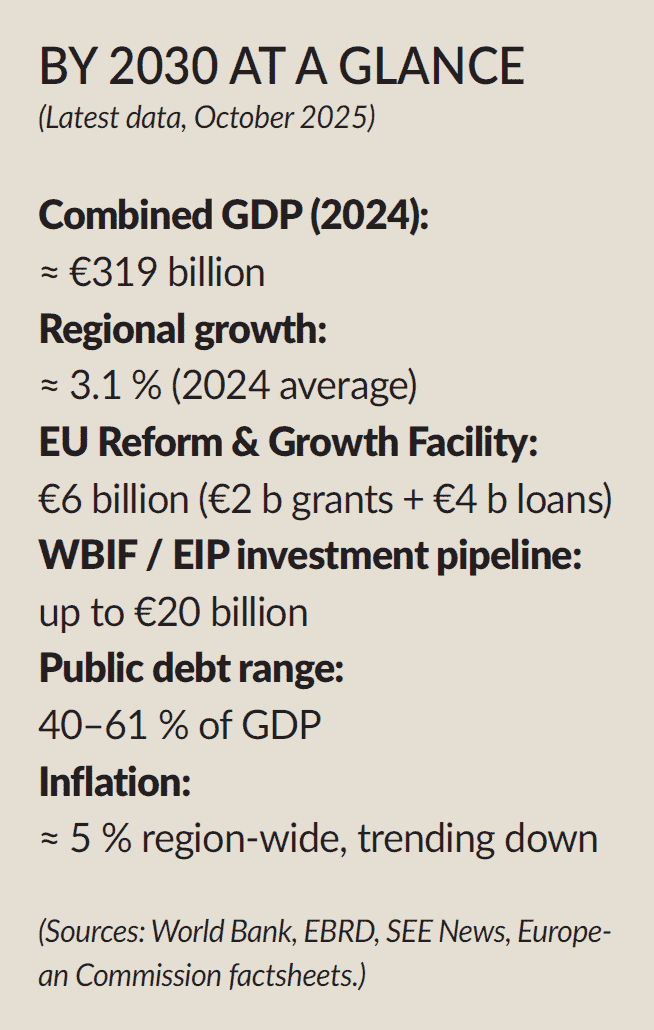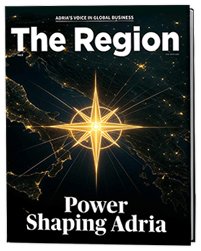How a coastline once divided by borders is quietly building Europe’s next growth story
Some regions are made by geography; others, by momentum. The Adria is becoming both. From Slovenia’s AI corridors to Montenegro’s fiscal discipline, from Croatia’s new bridges to Serbia’s start-up labs, a generation of builders is transforming a stretch of coastline long defined by transition into one defined by intention.
If the Western Balkans 2030 agenda outlines policy targets, Adria 2030 is the lived experiment — the point where ambition leaves the conference room and takes root in the market. The question is no longer whether the region will grow, but whether it can sustain that growth together.
From Transition to Intention
For decades, the word transition implied waiting — for reform, for investors, for Brussels. Now, the region is writing its own chapter of modernisation. Slovenia and Croatia anchor the EU’s Adriatic edge, while their neighbours accelerate along the same path, driven less by politics than by performance.
2030 isn’t a deadline,” says one European diplomat. “It’s the moment when the region’s confidence finally catches up with its potential
Viewed as a single economic belt, the Adria already produces more than €300 billion in output, rivaling mid-sized EU economies. What was once a patchwork of recovery plans is turning into a connected corridor of industry, tourism, and innovation.
The Engines of Growth
Green Energy
Wind farms on the Dalmatian coast, solar fields in North Macedonia, and Montenegro’s planned Green Bank are redefining what power means. The region is learning that sovereignty begins with self-sufficiency.
Digital Economy
Serbia’s AI strategy, Slovenia’s Vega supercomputer, and Albania’s appointment of the world’s first Minister for Artificial Intelligence show a new way of governing — data-driven, fast-moving, and proudly regional.
Smart Infrastructure
Corridors VIII and X-d, the Adriatic-Ionian highway, and a chain of upgraded ports from Rijeka to Durres are turning borders into junctions. The map of the future looks less political and more logistical.
Tourism Reinvented
Luxury is learning humility. From Istria’s wine estates to the sustainable townscape of Luštica Bay, tourism is trading quantity for quality — a long-term bet that beauty can be profitable and permanent.
Talent & Demography
The region’s truest resource remains its people. Cities like Ljubljana, Belgrade and Tirana are trying to reverse the talent drain by building ecosystems that make staying — or returning — worthwhile.
Private Capital, Public Confidence
Governments are competing less on tax rates and more on credibility. Montenegro’s discipline, Serbia’s digital reforms, North Macedonia’s EU-aligned legislation — each is setting a higher bar.
The private sector is moving even faster. Conglomerates like Atlantic Grupa, Balfin Group and MK Group now operate across multiple capitals as if borders were optional. Their reach has turned business integration into the region’s most effective diplomacy.
Adria’s advantage is no longer cost,” says a regional investor. “It’s convergence
Development banks are adapting to this reality. The EIB and EBRD are redirecting capital from concrete to code, co-financing innovation instead of merely underwriting infrastructure. Start-ups such as ElevenEs, GoOpti, Cognism and Revuto are proving that the next stage of integration might come not from treaties but from technology.

The Decade Ahead
By 2030, the EU’s €6 billion Reform & Growth Facility will have injected fresh capital into the Western Balkans, supported by WBIF and EIP programmes capable of mobilising up to €20 billion more.
But success won’t be measured in funds absorbed. It will hinge on whether the region’s governments and businesses can translate investment into interdependence — and resilience into trust.
Perhaps the deeper question is identity. What will Adria mean five years from now? A geographic convenience, or a shared idea of progress?
If the last decade was about catching up, this one is about catching on.
Adria 2030 isn’t a slogan. It’s the quiet conviction that the future of this coastline will be written not in isolation, but in connection.
